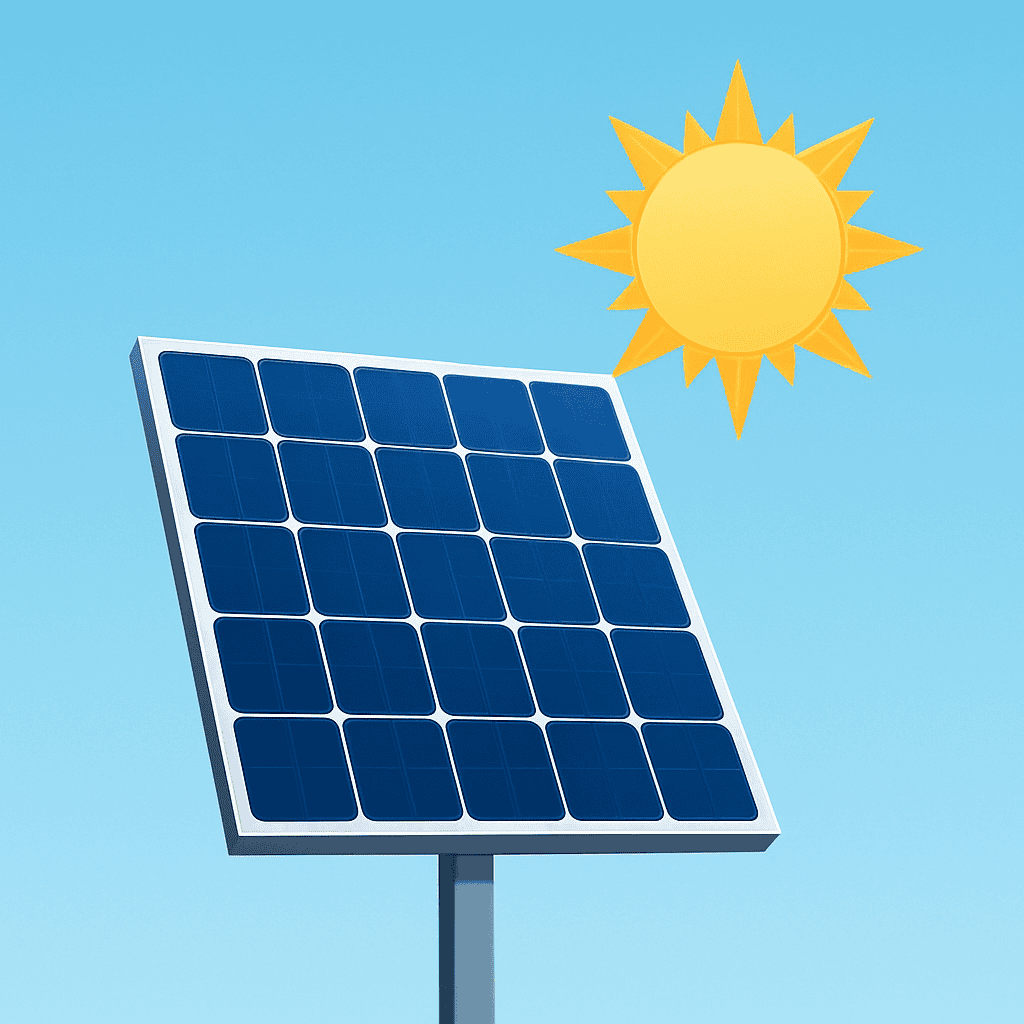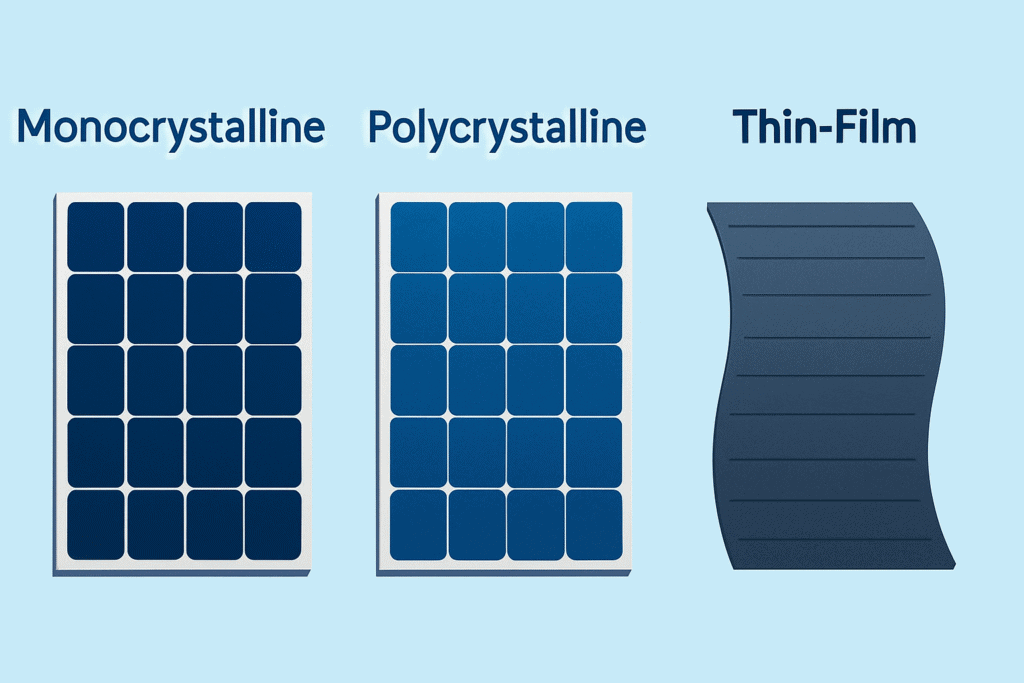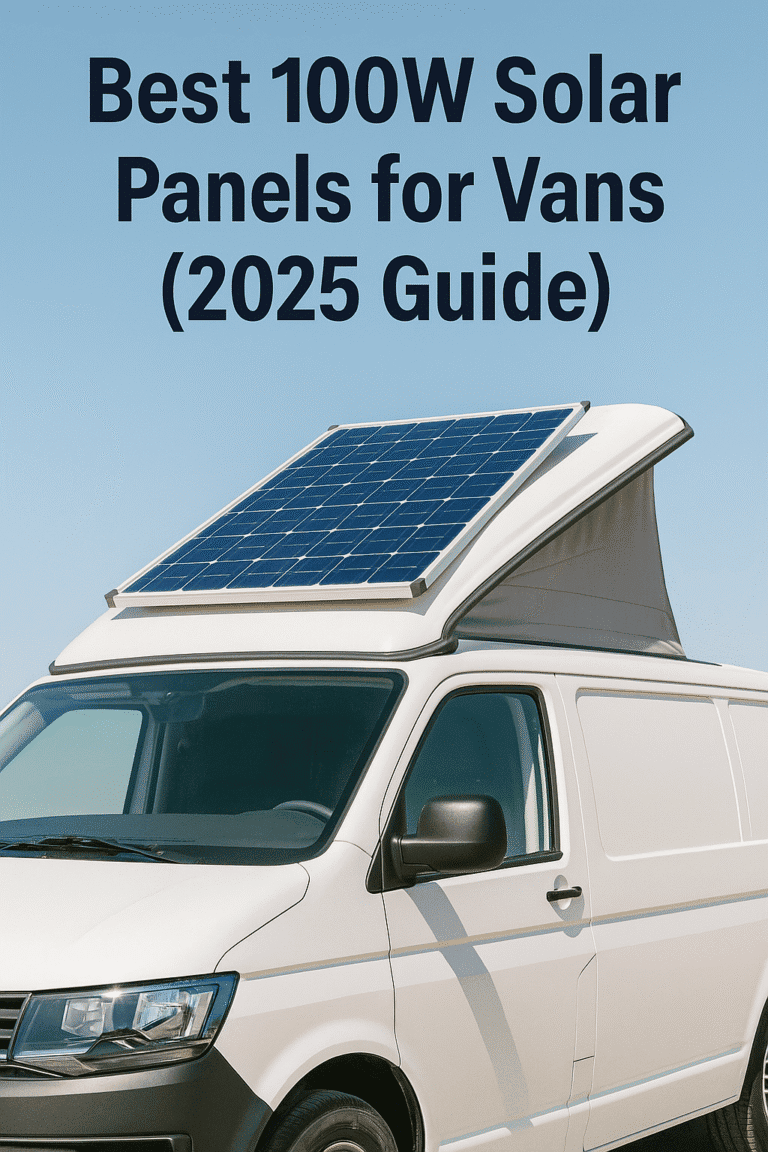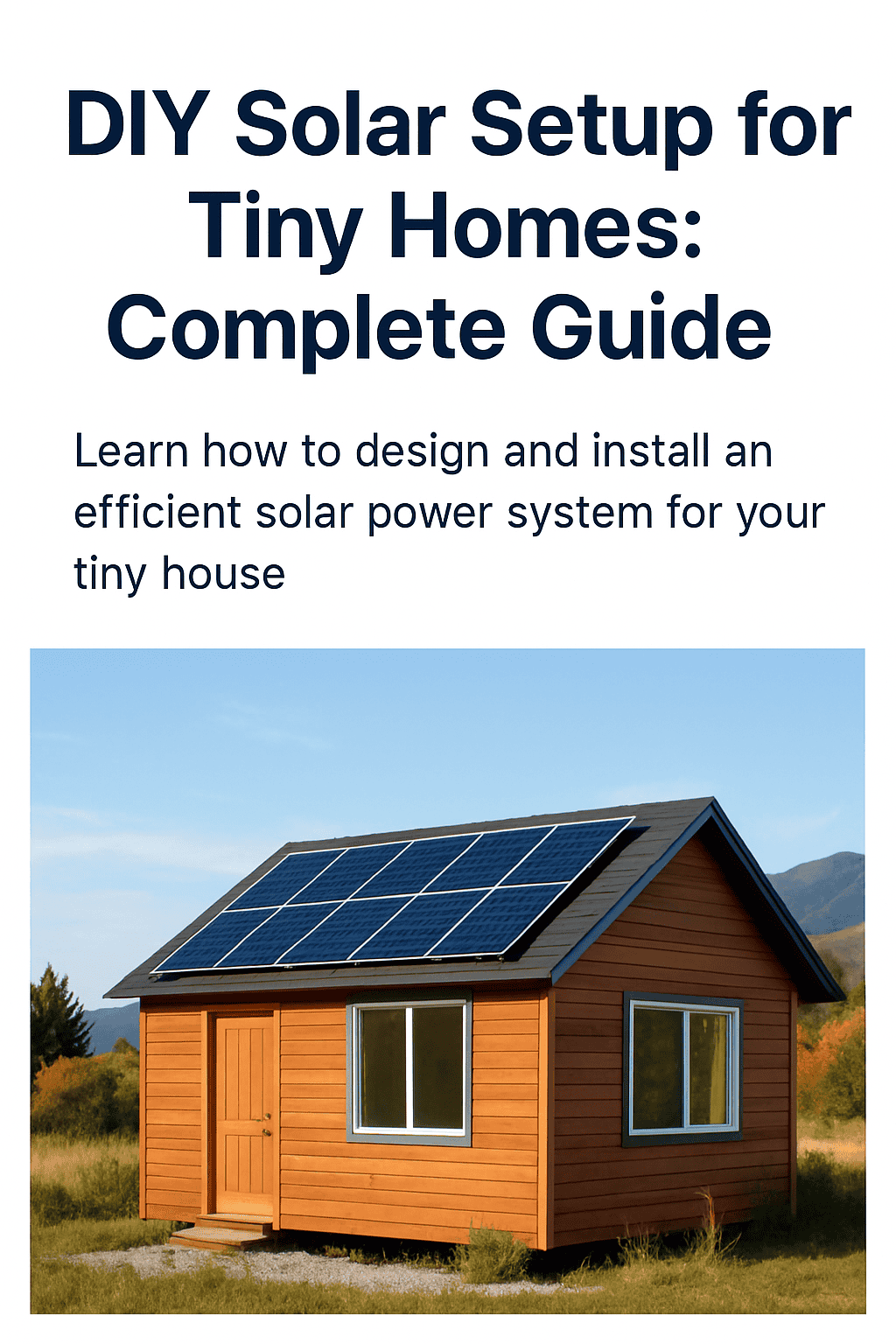🌞 The Best Guide to Solar Panels for Homes, Vans, and Cabins (2025)
Whether you’re dreaming of an off-grid cabin, hitting the road in a van, or simply wanting to cut your home electricity bill, solar panels are your gateway to clean, independent power.

In This Article
- 1 Introduction
- 2 What Are Solar Panels and How Do They Work?
- 3 Types of Solar Panels
- 4 Why Go Solar in 2025?
- 5 Home Solar Systems: What You Need to Know
- 6 Solar Panels for Vans: Power on the Move
- 7 Solar Panels for Cabins: Freedom Off the Grid
- 8 Installation Basics
- 9 How Much Can You Save With Solar Panels?
- 10 Common Myths About Solar Panels
- 11 FAQs About Solar Panels
- 12 Conclusion
Introduction
Solar energy isn’t just the future — it’s the present.
Whether you’re dreaming of an off-grid cabin, hitting the road in a van, or simply wanting to cut your home electricity bill, solar panels are your gateway to clean, independent power.

In this ultimate 2025 guide, we’ll break down everything you need to know about solar systems:
- How solar systems work
- How to choose the right setup for your needs
- Installation basics
- And how much you can actually save
Let’s get started!
What Are Solar Panels and How Do They Work?
- Solar modules (photovoltaic modules) convert sunlight into electricity.
- Photons from sunlight hit the panel’s cells, knocking electrons loose — creating an electric current.
- Inverters convert the current into usable electricity for your home, van, or cabin.
Key terms:
- PV Panels: Standard solar panels.
- Off-Grid Systems: No connection to the main electricity grid.
- Grid-Tied Systems: Connected to utility grid (can sell excess power).
Types of Solar Panels
| Type | Best For | Notes |
|---|---|---|
| Monocrystalline | Homes, Vans, Cabins | Most efficient, expensive |
| Polycrystalline | Budget Home Installs | Slightly less efficient |
| Thin-Film | Lightweight Applications | Flexible, portable setups |

✅ Recommendation:
- Home Systems: Monocrystalline for max output.
- Van/Cabin Setups: Monocrystalline or Thin-Film for weight savings.
Why Go Solar in 2025?
The year 2025 represents a perfect window of opportunity for investing in solar energy — whether you’re powering a home, van, or off-grid cabin.
Here’s exactly why:
1. Federal Tax Incentives Are Still Active
Thanks to the U.S. Investment Tax Credit (ITC), homeowners and DIY installers can still deduct up to 30% of their total solar system cost from their federal income taxes.
✅ Example:
- Spend $10,000 on a DIY home solar setup → get $3,000 back at tax time!
In addition to federal credits, many states offer extra rebates, property tax exemptions, and even cash-back programs to make solar more affordable than ever.
⚡ But act fast:
These incentives are scheduled to start phasing out after 2032 — so installing sooner locks in maximum savings.
2. Solar Technology Has Never Been Cheaper
Solar panel costs have dropped over 70% in the past decade.
In 2025, you can build a complete, efficient solar system for a fraction of what it cost just 5–7 years ago.
✅ Key Tech Improvements:
- Higher efficiency panels (22–24% is common now)
- Flexible and portable panels perfect for vanlife and cabins
- Better warranties (25+ years standard)
DIYers today can access professional-grade solar components at retail prices, meaning you keep installation savings in your pocket.
3. LiFePO4 Batteries Make Full Off-Grid Living Practical
Modern Lithium Iron Phosphate (LiFePO4) batteries have revolutionized solar energy storage:
✅ Benefits of LiFePO4 batteries:
- 3x longer lifespan compared to old lead-acid batteries
- Faster charging and discharging
- Safer thermal stability (minimal fire risk)
- Lightweight and maintenance-free
Whether you’re building a mobile solar van, a weekend cabin retreat, or a full-time off-grid homestead, affordable, powerful battery options now make true energy independence achievable.
4. Electricity Rates Keep Rising
Traditional utility electricity costs in the U.S. have been rising steadily every year, with average national increases of 3–5% annually.
✅ Installing your own solar system means:
- Protecting yourself against inflation
- Locking in decades of stable, free energy
- Gaining control over your power supply (no more outages, no more surprise bills)
Every kilowatt you produce yourself is a guaranteed saving — and those savings only compound over time.
🌟 Bottom Line:
2025 is one of the smartest years ever to go solar.
You can lock in government incentives, take advantage of low equipment costs, and set yourself up for decades of energy freedom.
✅ Whether you want to save money, protect the environment, or live truly independently — solar power is the way forward!
Home Solar Systems: What You Need to Know
How Much Power Do You Need?
- Average U.S. home: ~6,000–10,000 kWh/year.
- Requires ~20–30 panels (300W each) depending on location and efficiency.
Cost Estimates for Home Solar
| System Size | Estimated Installed Cost (After Incentives) |
|---|---|
| 5kW | $12,000–$15,000 |
| 10kW | $22,000–$30,000 |
✅ DIY kits can save up to 40% compared to full-service installers.
Solar Panels for Vans: Power on the Move
How Much Power Does a Van Need?
- Lights, fridge, fan, laptop: ~1–2kWh/day
- Typical van solar setup:
- 200–400W of panels
- 100Ah+ battery
- 20A–40A MPPT charge controller
- Small inverter (500–1500W)
✅ Recommended Panels:
- Renogy 100W or 200W kits
- Jackery or EcoFlow portable panels for flexible setups
You can check our guide: Best 100W Solar Panels for Vans
Solar Panels for Cabins: Freedom Off the Grid
Key Considerations
- No utility backup — batteries critical!
- Good planning needed for winter months (shorter days, snow).
Recommended Setup
- Minimum 2kWh battery storage (lithium preferred)
- 4–8 panels (100W–400W each)
- Charge controllers and hybrid inverters
✅ Recommended Brands:
- Renogy, WindyNation, Eco-Worthy, Battle Born Batteries
You can check our guide if you are interested in understanding more about solar batteries for cabins: Best Solar Batteries for Cabins (2025 Guide)
Installation Basics
Home Installation Tips
- Check local regulations and permitting
- Roof angle: ideally match your latitude
- Mounting systems vary: roof, ground, pole mounts
Van/Cabin Installation Tips
- Use lightweight panels if roof space limited
- MC4 connectors make wiring simple
- Always fuse panels and battery systems!
How Much Can You Save With Solar Panels?
| System Type | Estimated Yearly Savings |
|---|---|
| Home System | $800–$2,000/year |
| Van Setup | Save on campground and hookup fees |
| Cabin Setup | Complete energy independence |
✅ Most home systems pay for themselves in 5–7 years.
✅ Cabin and van setups can pay off even faster.
Common Myths About Solar Panels
- “Solar is too expensive.” → Prices have dropped 70% in 10 years.
- “Solar doesn’t work on cloudy days.” → Panels still produce 10–25% output.
- “Maintenance is hard.” → Simply wash off dirt twice a year.
FAQs About Solar Panels
Q1: How long do solar panels last?
Most modern solar panels are built to last 25 to 30 years or longer with proper care.
Over time, their efficiency gradually declines by about 0.5% to 0.8% per year.
This means after 25 years, your panels might still operate at 80–85% of their original capacity.
- Monocrystalline panels typically have the longest lifespan.
- Proper cleaning and avoiding heavy debris buildup can extend panel life.
- Warranty Tip: Look for manufacturers offering a 25-year performance warranty.
✅ With minimal maintenance, your solar setup will produce energy for decades — making it one of the best long-term investments for your home, van, or cabin.
Q2: Can you install solar panels yourself?
Yes, installing solar panels yourself — known as a DIY solar setup — is absolutely possible, especially for smaller projects like van conversions, cabins, or tiny homes.
Here’s a simple DIY solar checklist:
- Select the right panel type (rigid, flexible, portable)
- Calculate your power needs (kWh/day)
- Properly size your charge controller and inverter
- Use MC4 connectors for secure wiring
- Install fuses and breakers for safety
⚡ Home installations may require permits and inspections depending on your location.
Vans and cabins usually don’t need official approvals if off-grid.
✅ DIY installs save you $3,000–$10,000 compared to hiring professionals!
Q3: What maintenance do solar panels require?
Solar panels are impressively low-maintenance, but regular light upkeep ensures peak performance.
Typical Solar Maintenance Tasks:
- Clean dust, pollen, or snow from panels every 3–6 months.
- Check for loose wires or corrosion yearly.
- Inspect mounting hardware after severe weather events.
- Trim nearby trees to prevent shading.
🧼 Cleaning Tip: Use a soft brush and mild water — no harsh chemicals needed.
✅ With basic maintenance, your system will operate at near-maximum efficiency for decades!
Conclusion
Investing in solar energy is no longer just a trend — it’s a practical, smart choice for anyone looking to save money, live sustainably, or gain true independence from the grid.
Whether you dream of powering your home, traveling across the country in a solar-powered van, or building a self-sufficient off-grid cabin, 2025 offers more affordable, efficient, and reliable solar technology than ever before.
✅ Key Takeaways:
- Homeowners can save thousands over 20–30 years with a proper solar installation.
- Van lifers can enjoy total freedom and flexibility without reliance on campground hookups.
- Cabin owners can achieve full energy independence, even in remote locations.
Remember:
Choosing the right solar setup is about more than just watts and panels — it’s about designing a lifestyle powered by the sun.
✅ Ready to start your solar journey?
Explore our DIY guides and product reviews today — your future is powered by the sun! 🌞



